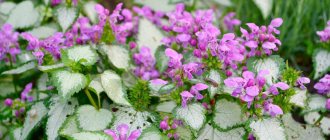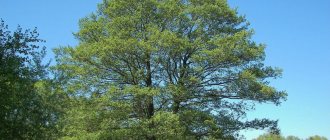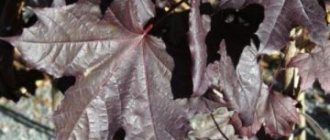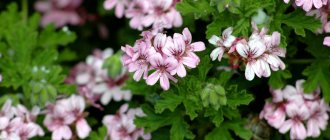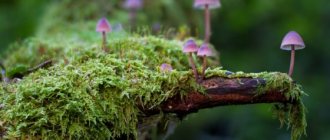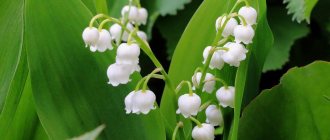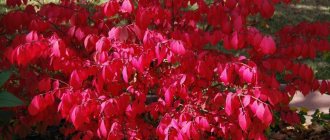- August 19, 2018
- Greens and herbs
- Natali Michaelis
Annual wormwood has a rich chemical composition, which determines its medicinal properties. This plant with a bitter taste and a rather specific smell will be familiar even to those people who do not understand herbs. Even in ancient Rome, it was used to strengthen the walls of the stomach, and in China it was worn on sandals, believing that in this way one could restore appetite after a serious illness. Many travelers took wormwood with them on long journeys because it helped avoid unpleasant symptoms of seasickness. And in many nations there were beliefs that the plant drives away evil spirits from a person if you make an amulet from the grass and hang it on the door of the house.
What are the medicinal properties of annual wormwood? This herb is mostly known for increasing appetite. Even doctors recommend taking it to patients who have undergone surgery on the stomach or intestines. However, few people know that this plant also helps fight cancer. Therefore, it’s time to stop treating it as an ordinary weed a long time ago.
Photo and description of annual wormwood
Have a hard time imagining what this medicinal plant looks like? In our article you will find many photographs of the miracle herb, and also find out what medicinal properties it has.
You can recognize bitter (annual) wormwood by its rather sharp, but at the same time pleasant aroma, as well as the whitish color of the leaves. Small pale yellow flowers are collected in panicle-shaped inflorescences. The flowering period begins in July and lasts almost until the end of August. This time of year is best for preparing raw materials for the winter.
Scientific classification
Artemisia annual belongs to the Aster family of the order Asteraceae. Class dicotyledons, division angiosperms (flowering). International scientific name in Latin: Artemisia annua.
Grows in bushes. The bushes have the shape of a pyramid and can reach a height of 1-1.5 m, as a result of which they are often planted along the boundaries of the site in the form of a hedge. Blooms from mid to late summer. The fruits appear from August to September.
What does grass look like:
- Stem. Height from 30 cm to 1 m. Erect, bare, ribbed. Young shoots are bright green in color; as they grow, they gradually acquire a brown or purple hue.
- Leaves. They are attached to the stem with the help of short petioles, the arrangement of the leaves is alternate (in a spiral). The color is dark green, bottle. Size – from 2.5 to 10 cm in length and from 2.5 to 4 cm in width.
- Flowers. Unsightly, small, yellow. They are located in hemispherical baskets, forming a paniculate branched inflorescence. The basket is located on a thin leg with a length of 1 to 3 mm. Along the edges of the basket there are female flowers with a thread-like tongue; in the center there are bisexual flowers of a goblet-tubular shape.
- Fruit. They are an elongated flat single-seeded plant.
Known plant species
Have you ever wondered where annual wormwood grows? First, you should find out how many varieties of this plant can be found in nature. In fact, there is a lot, but most people know only annual wormwood (artemisia annua), which can be found almost throughout Russia, especially in arid regions. It is worth noting that some types of this herb are poisonous, so it must be used as a traditional medicine with extreme caution. In total, there are about 400 species of this plant in nature.
- Tarragon is one of the types of annual wormwood, which is actively used in cooking. The unique taste and unique aroma of this plant give dishes an exquisite taste. Tarragon is also used in winemaking.
- A rather interesting type of medicinal herb is the so-called “God’s tree”. In some summer cottages it can be found as an ornamental plant. The smell of this herb is slightly different from annual wormwood.
- Wormwood and bitter wormwood are two varieties that bring maximum benefits to the human body. They are similar not only in appearance, but also in their medicinal properties. They are found almost everywhere in nature. These medicinal herbs are used to prepare oils, decoctions and tinctures that help fight a huge number of different diagnoses.
How to distinguish annual from perennial wormwood? To do this you will need to look at the root system of the plant. An annual grass has no buds, and buds, as you know, are an indicator of longevity. In appearance and smell, the herbs practically do not differ from each other, but the medicinal properties of annuals are much higher. Therefore, if you decide to make a decoction or infusion from a medicinal herb, it is recommended to use wormwood.
Other uses
In addition to medicinal purposes, wormwood of this type is also used in other areas:
- Cooking. Young leaves are recommended as an aromatic, spicy seasoning for meat. The seed is added to cereal products, flour, and tea is brewed.
- Chemical production. The aerial part of the herb is used to create a red dye - for dyeing leather products, natural fabrics, rhizome - lemon yellow, for dyeing wool, silk and leather items.
- Perfume industry. Essential oil is used as a fragrance in the manufacture of perfumes, eau de toilette, and cosmetics. It is also added to some types of soap.
Chemical composition
The main value of wormwood is its essential oil, since it contains a huge amount of useful microelements. Among them: borneol, pinene, cadinene, cineole, camphene, alcohols, butyric and acetic acid, camphor. In addition to all of the above, there is a small amount of alkaloids, tannins and ascorbic acid.
An interesting fact is that a special substance called the sesquiterpene lactone artemisinin is isolated from this plant - the main ingredient for the preparation of anti-malaria drugs. Accordingly, wormwood can be used to prepare ointments for this ailment.
Growing conditions - planting site, soil
Growing wormwood does not create problems. The plant is not capricious, you just need to provide it with a suitable position - warm, sunny.
Wormwood loves soils:
- permeable;
- dry;
- slightly alkaline or neutral pH.
Although wormwood is frost-resistant, it is worth finding a place protected from the wind for it; frosty winds in the spring can be destructive for plants.
A slightly sandy or even gravel substrate is optimal, providing good aeration and rapid water drainage. Loamy soil should be amended with appropriate loosening additives before growing wormwood. If the soil is too poor, you can dig it up the day before planting with a small amount of well-rotted manure or compost.
Collection rules
The main place where wormwood grows remains in the countryside. Here you can find medicinal herbs almost everywhere: in vegetable gardens, on roadsides, in courtyards, along forest paths, in meadows, wastelands and even pastures. In short, you definitely shouldn’t have any problems finding a plant. However, the preparation of medicinal herbs has its own subtleties.
- Wormwood must be harvested before it enters the flowering period. At this time, the plant must be cut completely to the roots. The second time the “harvest” is collected during the flowering of wormwood. It is necessary to collect only the tops (no more than 20 centimeters). If you follow this simple rule for collecting medicinal raw materials, the concentration of useful substances will reach a maximum.
- In autumn, it is allowed to collect only wormwood roots. But you don’t have to dry them, but just rinse them with running water to remove dirt and peel them.
- It is worth refraining from collecting wormwood near residential buildings and roads, since in these places there are a large number of toxins in the air, due to which the medicinal plant loses some of its beneficial properties. Go for raw materials only to environmentally friendly places, untouched by civilization.
- Try to cut only those plants that are just beginning to bloom. If you are at least a week late in collecting medicinal herbs, you may not get such a pronounced therapeutic effect from the use of infusions and decoctions.
- Don't be lazy to get up early in the morning to go for raw materials, as this is the best time of day to collect wormwood. It is advisable to wait for sunny, warm weather a few days before the “harvest”.
Immediately after collection, medicinal plants are sent for drying. This is best done in a dark place with high air temperatures, such as an attic. However, not everyone has the opportunity to use an attic, especially urban residents. In this case, a regular oven preheated to a temperature of 50°C will help. Properly dried raw materials can be stored for two years or more.
Competitive selection
Let's get acquainted with the assortment of wormwood, which are resistant to the climate of central Russia, do not require special conditions and are highly decorative.
Wormwood Pursha
Wormwood Pursha. Photo: Alexander Kabanov
This is a pretty plant up to 60 cm high with elongated whole leaves. Due to their pubescence they have a silvery color. This wormwood can always be trimmed, giving it a more regular shape, since it tolerates this procedure painlessly.
It grows actively due to long rhizomes.
Steller's Wormwood
It has openwork cut leaves of a grayish-white color, which can persist in winter. Although this species is not tall (usually does not exceed 20–30 cm), its stems are lodging.
It has long rhizomes, due to which a loose clump is quickly formed.
Wormwood Schmidt
Artemisia Schmidt 'Nana'. Photo: Alexander Kabanov
Article on the topic
The color of a noble metal. Decorate your garden with silver foliage plants
Forms compact, dense bushes of round shape. The species is quite compact: its height does not exceed 30 cm. The foliage of this wormwood is even more elegant due to its strong dissection - each leaf consists of many thread-like lobes. Their silvery-green color is also interesting.
The 'Nana' variety is suitable even for the smallest gardens: its height does not exceed 15–20 cm.
Artemisia pontica
A plant with graceful pinnately dissected leaves with light silvery pubescence. This species is quite tall - up to 100 cm.
It grows actively, eventually forming large thickets.
Wormwood Louis
Wormwood Louis 'Siver Queen'. Photo: Alexander Kabanov
Interesting wormwood with a characteristic appearance. Its height usually does not exceed 60–80 cm. A distinctive feature is elongated silver-gray whole leaves with teeth at the top. In addition to the natural appearance, there are also varieties that differ in the size of the leaf blade, as well as the location and size of the denticles on the leaf. For example, the 'Valeri Finning' variety has few cloves, so overall the plant has a more austere appearance. 'Siver Queen' looks completely different with more elongated leaves (and the teeth on them are more clearly defined). This openwork variety fully lives up to its name - 'Silver Queen'.
The healing properties of wormwood
Annual wormwood, the description and photo of which you could see above, has a number of medicinal properties with a fairly wide spectrum of action. It is worth noting that the medicinal herb is used in both folk and traditional medicine. Here is just a small list of what bitter wormwood helps fight:
- The medicinal plant is prescribed for obesity, as well as metabolic disorders in the body. Excellent fight against parasites and viral infections in the intestines.
- Annual wormwood has anti-cancer properties against cancer. In this regard, folk remedies based on medicinal herbs provide good auxiliary treatment for a terrible diagnosis.
- During pregnancy, seeds of annual wormwood in small quantities will help overcome toxicosis. However, the decoction should only be used after consultation with a specialist.
- The analgesic properties of the medicinal plant make it possible to recommend wormwood for severe headaches and painful menstruation, and rinsing your teeth with a decoction of the medicinal plant will not only relieve pain, but also eliminate inflammation.
- In medicine, there are known cases of cure for tuberculosis with the help of folk remedies, which included annual wormwood. However, the decoction also contained a small amount of white wine and honey, so we cannot say for sure that it was wormwood that helped cure a serious respiratory tract disease.
Also, various weeds, including wormwood, help raise the overall tone of the body. You just need to be able to properly prepare a decoction of medicinal herbs and know the required dosage.
Side effects
A long course and overdose can lead to side effects:
- Hallucinations;
- Allergies in the form of itching and urticaria;
- Loss of consciousness;
- Digestive upset in the form of nausea, diarrhea, constipation, heartburn, vomiting;
- Tremor;
- Convulsions;
- Headache;
- Dizziness.
Before using an infusion or decoction based on wormwood, you must remember the following:
- The course of treatment and dosage should be prescribed by a doctor;
- The duration of treatment should be no more than 2 weeks;
- A repeated course should be prescribed based on the effectiveness of treatment and side effects;
- Wormwood should not be consumed by children under 12 years of age;
- If any side effects occur during treatment, the drug should be discontinued and consult a specialist.
Wormwood against parasites
Quite a lot of people are interested in the question of how to properly drink wormwood against parasites. For these purposes, you can take special infusions, but for greater effectiveness it is also recommended to do wormwood-garlic enemas. The treatment method is quite simple. First you need to get rid of the irritating properties of garlic, which is part of the decoction. To do this, keep the cleaned head in a water bath for 20 minutes. You should prepare two glasses of wormwood decoction in advance. After 20 minutes, they are mixed with garlic broth. This mixture is used as an enema liquid. The course of treatment lasts several days.
Procurement of raw materials
The upper flowering stems and leaves are used medicinally. The first ones are harvested in June–August, when wormwood blooms. The grass should consist of basal leaves and leafy tops. At the beginning of flowering, the leaves are collected, put in bags and sent for drying as quickly as possible. It happens that other types of wormwood are included in the collection, for example, common wormwood, Siversa. This admixture does not reduce the healing properties.
Procurement of ingredients usually lasts 10-15 days. First, all parts are carefully examined and late flowering inflorescences, which are brown in color, are removed. Then, in the air or in a ventilated room, drying begins, the end of which is determined by the fragility of the petioles and stems. Ultimately, the product should contain no more than 13% moisture. Raw materials can be stored for two years.
Tea to normalize digestion
If you experience abdominal discomfort: bloating, flatulence, nausea and gas, then you should undergo a course of treatment with tea made from annual wormwood. To do this, mix 1/4 cup of boiling water with a teaspoon of dry wormwood. After which the drink is infused for 10 minutes and consumed 3 glasses per day. The tea will taste bitter, but it is highly effective in combating abdominal discomfort. Wormwood tea also helps fight kidney stones, gallstones and jaundice.
Herbal syrup
A special syrup can be prepared from bitter wormwood, which will have an effective effect on the body for diseases of the stomach, liver and kidneys. To do this, you will need to take 100 grams of dry wormwood, soak it for 24 hours in cold water, and then boil it for about 30 minutes over low heat. It is important that the container with the decoction is tightly closed with a lid. After half an hour, add about 400 grams of sugar or honey to the pan and continue to cook the syrup for another 15 minutes. This folk remedy is consumed 3 times a day, one dessert spoon half an hour before meals.
Tarragon
In addition to the common name, this type of wormwood is called tarragon, dragoon grass, turgun, and so on. The plant is a perennial herb with a spicy odor. There is also a type of tarragon that is odorless. The aroma is due to the presence of essential oils. Wormwood leaves contain vitamin C and carotene, as well as mineral salts such as manganese, cobalt, and copper.
Does not require special breeding conditions. But for better growth and accumulation of essential oils, you need to plant wormwood in unshaded areas with loose, light soil. Propagated both by seeds and vegetatively. Caring for plantings consists of several stages: loosening, weeding, watering, fertilizing with mineral fertilizers. Grass grows almost everywhere - Mongolia, India, Pakistan, China, Alaska, North America and Russia do not suffer from a shortage of this useful plant.
Infusion to increase appetite
For eating disorders caused by severe operations, a therapist may prescribe wormwood tincture. To prepare it you will need to take 70% alcohol and a little dry wormwood. The ingredients are mixed in a ratio of 1:5, after which the tincture is stored for 21 days in a dark place. Before using it, you should strain it thoroughly. Take 20 grams once a day. This remedy not only increases appetite, but also helps fight gastritis with low acidity.
Artemisia juice
What about a folk remedy for joint pain? Most people suffering from this illness have learned from their own experience that it is quite difficult to cope with unpleasant symptoms. However, the medicinal properties of young wormwood can even fight salt deposits that accumulate in our body over the years. To do this you will need to make a special compress. Rub the juice of the young grass onto the problem area, then wrap it in plastic wrap and secure it with a bandage. This compress should be done before bed so that it is properly absorbed overnight. The procedures are possible both during the period of exacerbation of the disease and for preventive purposes. Do not forget to monitor your diet in parallel in order to normalize salt metabolism in the body.
We hope our article has revealed to you all the benefits of annual wormwood. Reviews about this medicinal herb indicate the effectiveness of products based on the medicinal plant. Still would! Even doctors recommend tinctures and decoctions from this plant to treat many diseases. Also, do not forget that against cancer, wormwood has a number of beneficial properties that help fight even such a serious disease.
Habitat
Bitter (or white) wormwood is found everywhere . This plant prefers to grow near roads, in landfills, wastelands, forest edges and weedy meadows. Very often this plant can be found near houses, in gardens and vegetable gardens; it forms dense thickets and is a very tenacious and persistent weed.
This type of grass is quite common in Europe and also grows in Western Asia and North Africa. In Russia, bitter grass is most often found in Siberia and the northern regions. It is grown industrially in the USA, Russia, North Africa, and southern European countries. Essential oil is usually produced from dry raw materials.
